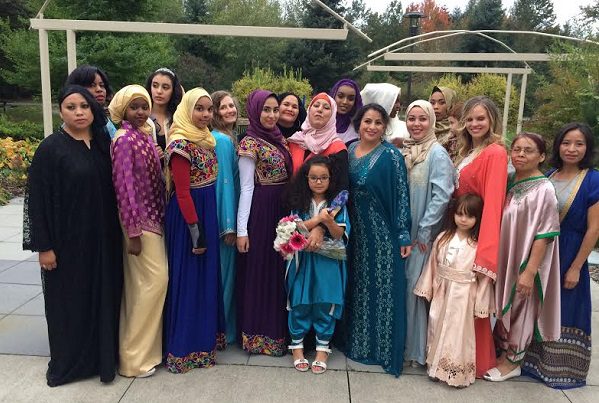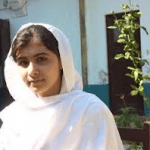 |
|
Some were blockaded
|
December 27th, 2009, marked the one-year anniversary since Israel began attacking and invading the Gaza strip. The invasion of Gaza lasted 23 days and killed over 1,400 Palestinians. The Gaza Freedom March, organized by the International Coalition to End the Illegal Siege of Gaza, aimed to mark the anniversary by mobilizing hundreds to enter Gaza from Egypt to end the blockade of Gaza, and was part of a broader strategy to end the illegal Israeli occupation.
Over 1,400 activists gathered in Cairo in late December from 43 countries to participate in the peaceful march. However, in mid-December, after 6 months notice from the organizers of their plans, the Egyptian government announced they would not let the GFM proceed.
For over a week, the 1,400 activists who had converged in Cairo to reach Gaza, continued to mobilize, meet, and protest on the streets of the city. Yet their demands for all the marchers to be let into Gaza were not met, and instead Egyptian police surrounded them.
Ali Abunimah, a GFM participant and co-founder of the Electronic Intifada, described the interactions with the Egyptian authorities: “Our main point of contact was with the police, who followed us around everywhere and were on hand whenever we held a vigil or protest. Our goal had been to pass through Egypt very quickly en route to Gaza, but the Egyptian decision meant we were stuck in Cairo. Police prevented people moving around freely, occasionally blockaded hotels, and most significantly kept Egyptians away from us whenever they tried to talk to us or vice versa.” Both riot police and undercover agents were continuously present.
Eventually the Egyptian government announced that it would allow 100 of the marchers into Gaza. However, only 84 ended up entering Gaza from the contingent, for 36 hours. Abunimah said: “…Our colleagues in Palestine — felt that the Egyptian offer would be used as propaganda to say that Egypt was in fact letting us in when the reality was that most of us were being prevented from going to Gaza. It was very tough and emotional to make that decision under so much pressure, but I am convinced it was the right decision for me to get off the bus.”
Though the Gaza Freedom March was overall not allowed to proceed and its participants were disappointed in not being able to enter Gaza, the GFM drafted the Cairo Declaration, which re-energized the participants. The landmark Declaration was initiated by the South African delegation: “…which included veterans of the struggle against apartheid…their central role brought experience, sophisticated analysis and moral authority to the effort” explained Abunimah. The Declaration reaffirms the commitment of the marchers to the Palestinian civil society call for BDS (Boycott, Divestment, and Sanctions) against Israel.
The Cairo Declaration demonstrated the united activism of the 1,400 marchers, despite being under daily immense monitoring by the Egyptian police.
Meanwhile, Nitin Sawhney, an organizer for the Boston Palestine Film Festival and another GFM marcher (and not to be confused with the British musician of the same name), was the only individual foreign national allowed into Gaza through the Rafah crossing by Egypt, for an extended stay in January 2010. The only other foreign nationals allowed in through Rafah were the Viva Palestina convoy, and the 84 individuals from the Gaza Freedom March; both groups were allowed in Gaza for only 36 hours. During his two weeks in Gaza, Sawhney conducted research and efforts to establish a future digital media and production program for youth.
Sawhney was able to enter Gaza as an individual because of help from the Indian embassy in Cairo: “Even though most embassies were completely uncooperative, my embassy for some reason felt like they needed to do something to support my application. I presented it as a humanitarian and research mission – I had letters from NGOs, and I convinced them that my being there was an important thing for me personally, and for the Indian government to support.” The Indian embassy wrote a letter on Sawhney’s behalf to the foreign ministry, and he received a permit shortly after. “The border was only open on January 4th and 5th, for a total of two days officially. Over a 12-hour period, crossing 13 checkpoints from Cairo to Rafah, I finally managed to get through, after lots of negotiations at almost every security checkpoint. Indeed I was the only one who got in, before the border was completely shut. And they weren’t even letting anyone out for an indefinite period.”
The Israeli blockade of Gaza began in June 2007, after Hamas defeated Fatah forces in the Gaza Strip, and the blockade continued the economic sanctions that began in March 2006, after Hamas won democratic elections in January. The blockade affects Gaza’s borders with Israel and Egypt, and by sea Gaza is blockaded by the Israeli navy. According to Abunimah, the blockade is “…an outrageous, historic crime, as is the complicity of all the governments helping Israel enforce it.” The blockade impoverished the population of Gaza, and devastated the Gaza economy, which now relies on tunnel trade. Each tunnel takes two years and $100,000 to build, and young teenage boys work in the tunnels, going 60 meters underground under tough and extreme conditions.
Sawhney was able to witness the activities of the tunnels: “There are white tents set up all along the border, only meters away from the border wall with Egypt. Everyone can see that these are tunnels.”
Because of the blockade, Sawhney stated that: “The tunnels are there as a lifeline of support for basic good and services into Gaza. Pretty much the entire economy of Gaza is run through tunnel trade, right now.” Inflation has dramatically risen because of the tight Israeli blockade, resulting in goods that get into Gaza via the tunnels being six times the normal price. This includes consumer goods and food supplies.
Furthermore, Sawhney explained that Gaza’s entire supply of fuel and gas comes from the tunnel trade, and added: “This was all done with the complete understanding of the Egyptian authorities. They knew what was going on. In fact they’re benefiting from it. They’re able to charge a tremendous amount of money for the Egyptian goods… They’re very much in complicity of the tunnel trade, and it’s shocking to me that they’re the ones trying to blockade those tunnels now.” Egypt is currently building a steel wall on its border with Gaza.
Because of the blockade, Palestinians in Gaza are rarely allowed to enter or leave the Gaza Strip, including university students with admissions abroad, and those with medical emergencies. For Sawhney, “It’s the human aspect of the blockade that we need to hear about. We absolutely need to do something about that.” Abunimah provided further reflection on the frustration the marchers felt in not being allowed into the Gaza Strip: “It gave us a small taste of the infinitely greater frustration that 1.5 million people in Gaza feel every day at being held prisoner by Israel with US and Egyptian complicity.”
Hena Ashraf is a filmmaker and a fierce advocate for the making and use of independent media. She can be reached at [email protected]. More information on the Gaza Freedom March can be found at www.gazafreedommarch.org.











